By Jessica Ravitz, CNN
Updated 10:42 AM ET, Wed July 5, 2017
Venice Beach, California (CNN)As a small child, she played hide-and-seek with nurses, ripped out IVs to race around the hospital floor naked and left an explosion of glitter in her wake.
As a teen, she got boys to carry her uphill when she was tired, taught her best friend how to flirt and watched her doctor squirm as he gave her the safe-sex talk.
And as an adult, Claire Wineland has continued living out loud, even as her body fails her.
Claire, 20, has cystic fibrosis, a genetic and terminal progressive disease that's landed her in the hospital for a quarter of her life. Ask what's on her bucket list, and she'll say she doesn't have one.
Fixating on a checklist of goals before she goes "sounds exhausting," she says, especially "when you've been dying your whole life." Instead, she'd rather focus on doing all she can in each moment.
It's a sort of wisdom that makes some describe this California free spirit as "an old soul" or "a little Buddha."
I meet Claire in a Venice Beach café; everyone who works there seems to know her. She's on a mission to normalize sickness, push back at those who pity her and have a meaningful life for however long it lasts. Although she certainly has her down days -- "Who doesn't?" she notes -- this self-described "goofball" tackles life with humor and the sort of charisma that draws people to her.
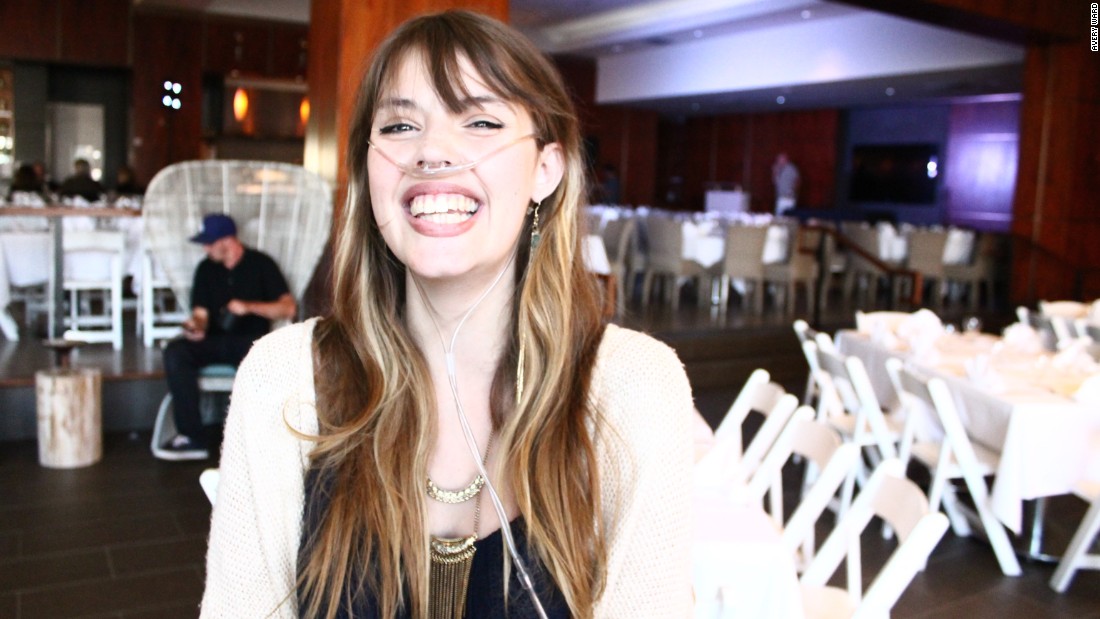 Claire Wineland smiles broadly at a comedy roast to raise money for Claire's Place Foundation in July 2015. Photo Credit: Avery Ward
Claire Wineland smiles broadly at a comedy roast to raise money for Claire's Place Foundation in July 2015. Photo Credit: Avery Ward
Still, she says, she must train people to feel comfortable around her.
"I can't just expect people to know what to say," she says, "I have to make them see me as more than my illness."
She's been working at it on a number of fronts: In high school, she created a series of videos that went viral and penned pieces for national audiences, including one for CNN. She's appeared in magazines, on television shows and at teen award ceremonies. She's heading up a foundation, writing a book -- she promises it's not "another happy sick person book" -- and packing in as much as her 5-foot-2, 95-pound frame can handle.
Through it all, she gives public talks. On this day, that's at a TEDx event in Encinitas, a beachside community 100 miles south of her apartment in LA's Venice Beach.
We'd arranged to take the train down for the event. But she'd been fighting a fever as high as 103 the day before, the result of one of many infections her body continuously fights. When I offer to drive instead, she seems relieved. I am, too.
She's chatty and bubbly for most of the two-plus-hour trip, until she feels the fever coming back and curls up in the passenger seat for a nap. The only sound from her now is an occasional cough and the pumping of a portable oxygen concentrator, which gives her the air she needs without the burden of a tank. When I glance over, I spot a tattoo on her left ankle: the "thumbs up" logo from "The Hitchhiker's Guide to the Galaxy," with the phrase "DON'T PANIC."
But I start to do so when she wakes up and says her lungs feel "funny." At the venue, she makes her way to the "green room," where she sits, eyes closed, willing stomach pains to subside, trying to pull it together. She's set to go on in 20 minutes, and I'm afraid she won't make it.
More than a sick kid
She's been riveting audiences since she was 14, when she first stepped on a stage in a new ruffled dress. When I picked her up at her apartment, she wore faded black jeans and a black T-shirt that read "Sexual Intellectual."
"Life is too short to not be yourself," she said.
Ever since she was little, she found it strange how people treated her. They'd peer down with sad eyes and say, "I'm so sorry." It was a statement she heard so often, it was hard not to internalize. And in a society consumed with being healthy, she grew confused.
"What happens when you have an illness where you're never going to be healthy?" she asked. "Does that mean I'm never going to have a life? Am I never going to do anything or be anything other than a sick kid?"
Claire is one of 70,000 people worldwide, 30,000 in the United States alone, who live with cystic fibrosis, the Cystic Fibrosis Foundation estimates. To have the disease, both parents must be carriers of the CF gene. If they are, there's a one in four chance their children will be born with the disease.
Cystic fibrosis leads to an overabundance of mucus, which blocks airways and traps infections in the lungs, complicates digestion, affects the pancreas and other organs and, with time, causes respiratory failure.
At last count, Claire says, she's had more than 30 surgeries. On a daily basis, she takes about four dozen medications, including self-administered shots for her CF-related diabetes, and might spend up to six hours on breathing treatments.
She dons a vest to shake her lungs and loosen mucus, and uses a nebulizer to blow in steam and inhale medicines. She can cough up enough mucus each day to measure in cups. She gets admitted to the hospital for regular tuneups and intensive treatments.
All the while, with her lung capacity diminished, her body works harder to breathe.
"It's like I'm jogging 24/7," she said. She must consume as many as 5,000 calories a day to maintain her weight -- forget about gaining any.
That explains the two large pastries she ordered for lunch when we met, and the French fries she got to go. And it's why her younger sister, Elanore Nordquist, 13, used to get miffed whenever she wasn't allowed a second piece of cake but Claire could always have as much as she wanted.
Even with this carte blanche for consumption, Claire takes in 2,000 calories through a feeding tube as she sleeps, while a machine helps her breathe so her body can rest.
Pineapples and mushrooms
Claire can laugh at the absurdities in her life. She tells stories of strangers who've approached her with unsolicited prescriptions for cures. The produce section of Whole Foods is ripe for material, she says. One shopper told her she simply needed to eat more pineapple. Another said all she required was a mushroom cleanse.
And then there was the homeless guy outside a gas station who insisted that the mind can change reality and that she didn't need to be sick. She remembered thinking, with a laugh, "If that's true, why are you homeless?"
But it was a friend who, when Claire was 11, changed her outlook by handing her a book he insisted she see.
 Claire has always welcomed chances to escape Los Angeles and breathe cleaner air. Here, she visits Vancouver, British Columbia, several years ago.
Claire has always welcomed chances to escape Los Angeles and breathe cleaner air. Here, she visits Vancouver, British Columbia, several years ago.It was Stephen Hawking's "A Brief History of Time." The cosmology book blew her young and curious mind, and she rushed to the library to learn more about its author. Only then did she find out that Hawking had ALS, or Lou Gehrig's disease, and was terminally ill, too.
Until that moment, Claire -- an avid reader -- had yet to find any role models, examples of sick people doing remarkable things.
"His body was completely failing, but he was contributing something incredible to society," she said. Hawking's diagnosis did not define him. "He transcended it."
In him, she found inspiration, though it would take a steep downturn for her to see her way up.
Flatlining
The sicker a person with cystic fibrosis gets, the more work they need to do to stay relatively well -- and the harder it is to do that work. It's enough to make some "CFers," as Claire calls them, stop trying.
She gets it because she was once there.
"It's not that I wanted to die," she said. "But I didn't know how to live."
At 12, she feared that she was surviving just to survive.
During a hospital stay, she had become close friends with Vanessa, another girl with cystic fibrosis. CFers aren't supposed to be together, as they carry bacteria that can be deadly if shared. But these two girls connected at a safe distance, doing art projects across the room while wearing protective masks. They made disco balls for the nursing station out of crushed CDs and glue, shared an understanding and a sense of humor and, over the course of a year and a half, a deep friendship. And then, Vanessa died.
Bereft and facing a lifetime of treatments, Claire asked herself, "Why am I doing this?"
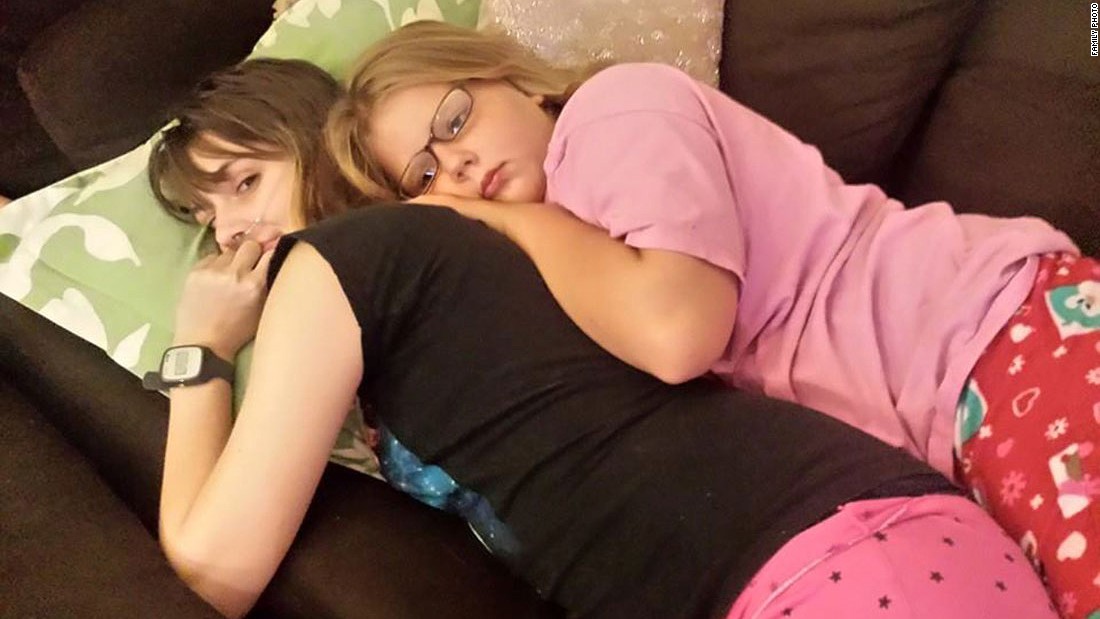 Claire and her sister, Elanore Nordquist, cuddle the night before Claire moves out of the house. One of the things Claire appreciates most about Elanore is that she's never treated Claire like a sick person.
Claire and her sister, Elanore Nordquist, cuddle the night before Claire moves out of the house. One of the things Claire appreciates most about Elanore is that she's never treated Claire like a sick person.So she began to lie, saying she took her medications and treatments when she didn't. For a year, her health slipped, and she said no one could figure out why. Claire, who'd always peppered her doctors and nurses with questions, knew the language and how to trick everyone.
The day after her 13th birthday, a straightforward surgery to deal with acid reflux spiraled into chaos. She contracted a blood infection that attacked her lungs. She could feel them failing.
As her oxygen levels plummeted, she began hallucinating. In a moment of clarity, she thought, "I don't want to actually die. I want to see what happens in life. I want to see where it goes."
She was placed in a medically induced coma, intubated and hooked up to an oscillator, a machine that gently puffed air into her fragile lungs. No child with CF had successfully come off an oscillator, doctors told her parents. Claire says she was given a 1% chance of survival. She flatlined twice.
Her little sister was 6 at the time. Elanore remembers a social worker talking to her before she went in -- "all sanitized and in a gown" -- to see Claire.
"They told me to say goodbye," Elanore said. "They told me 'she's probably not going to wake up.' "
A winter wonderland
There was no white light. Instead, Claire transported herself to a place she'd never been: Alaska.
Her subconscious journey began beneath ice water, she says. When she surfaced, she peered up at a mountain of snow. She sat amid ice-crystal-covered pine trees, floated on ice sheets while looking up at stars and hung out in a woodland house where animals streamed in to visit her.
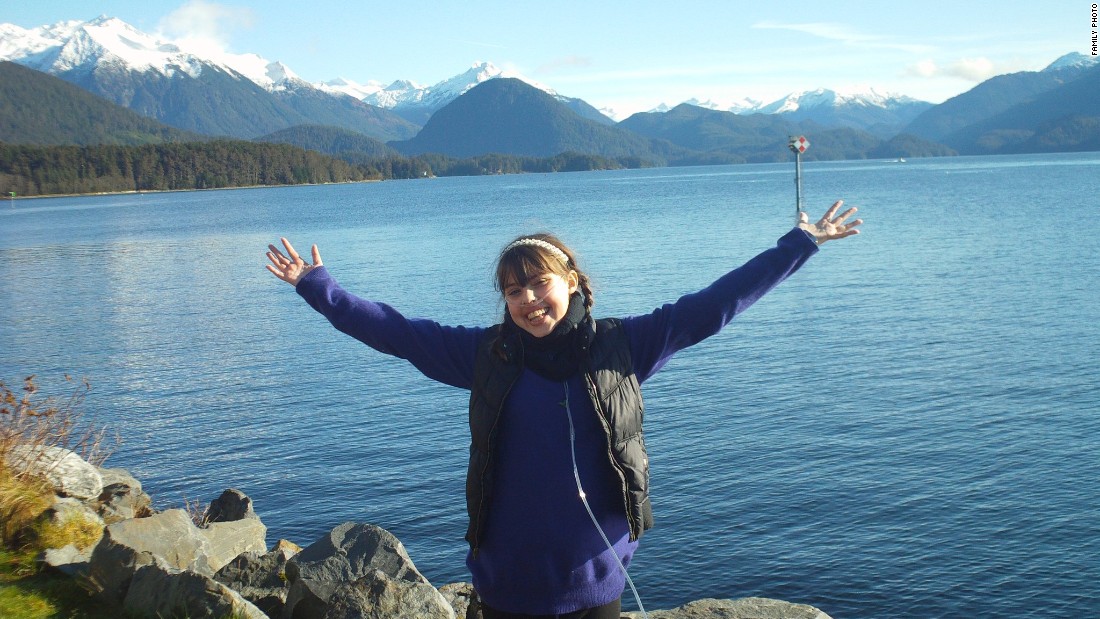 After her coma, Claire traveled to Sitka, Alaska, the place she believes she subconciously visited.
After her coma, Claire traveled to Sitka, Alaska, the place she believes she subconciously visited.Claire remained in a coma for more than two weeks. When she woke up, she learned that her dream world had unfolded while she had been submerged in an ice bath to bring down her fever.
Though conscious again, she couldn't walk, sit up or hold silverware. She had to wear diapers. Her mom called her "Grandpa," a memory that still makes her laugh.
"My body had no reserves left," she said. "It was kaput."
In the many months she worked to get stronger, she found renewed purpose.
"I feel like she had a spiritual experience," said her mom, Melissa Nordquist Yeager. "She came out inspired to help others."
Finding meaning by giving back
Claire entered the world the way she lives: boldly.
Yeager was overdue to give birth to her firstborn when a routine ultrasound morphed into a scene of terror.
She watched the doctor's face as he studied the screen. He ducked out and returned with another doctor. They told her that something was wrong with the baby and that Yeager had to be induced immediately.
Claire was born with meconium ileus, a bowel obstruction that is a telltale sign of CF. Her bowel had ruptured, leaving her belly protruded, and she was whisked off for the first of many surgeries.
"The prognosis was five years," Yeager said, "and that was a maybe."
Claire spent the next seven weeks in neonatal intensive care. Her father, John Wineland, recalls peering down at his daughter as she screamed amid the medical equipment and tubes. Their eyes locked.
"It's going to be OK," he remembers telling her. "We're in this together."
Just like that, Claire's parents, who then lived in Austin, Texas, were jolted from naivete.
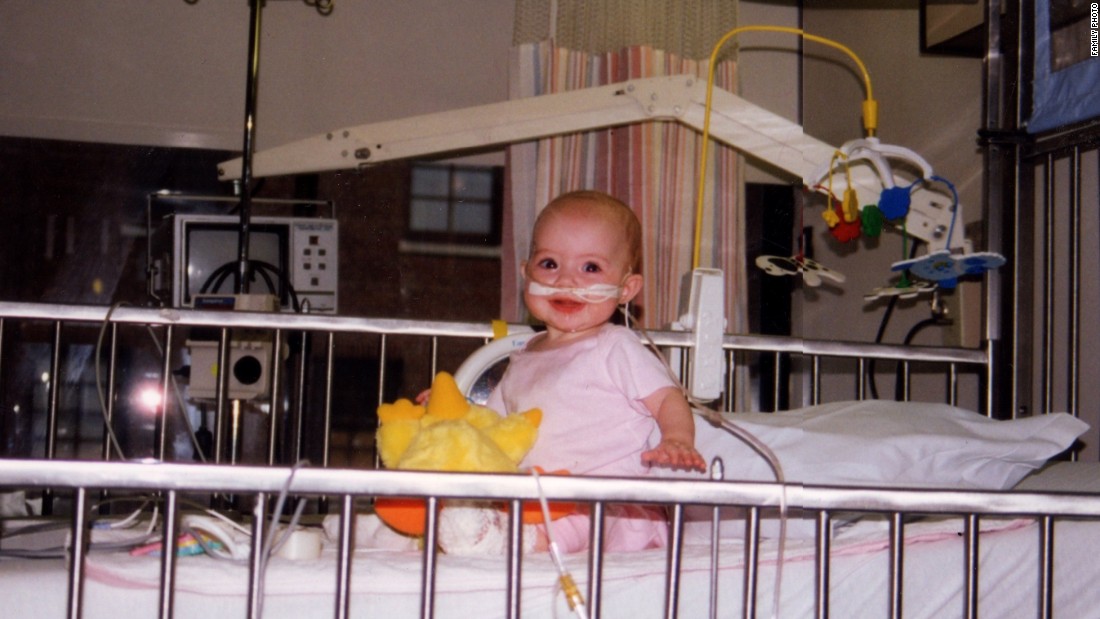 Claire has spent a quarter of her life in the hospital, mostly at Long Beach Memorial Medical Center in California, where her medical team is just like family.
Claire has spent a quarter of her life in the hospital, mostly at Long Beach Memorial Medical Center in California, where her medical team is just like family.Raising a daughter with CF "has consumed most of my attention, most of my life," said Yeager, who now lives in Seal Beach, California. She and Wineland, of Santa Monica, never married and decided to split when Claire was 3, but they remained close friends and have continued to tackle Claire's care together.
With Claire in the hospital two or three months a year, Yeager never felt that she could build a career. She lost a handful of jobs and quit others as hospital stays dictated. She'd take the day shifts with Claire while Wineland took nights. He'd hunker down next to Claire in the hospital, watch movies with her at 3 a.m. when she couldn't sleep, and head to work in the morning.
All the while, Claire's parents -- and, by extension, Claire -- were surrounded by friends. They'd come to the hospital with meals, stick around when her parents couldn't, help rally the family and manage their lives. They also helped make Claire more outgoing and sociable, her dad says.
Claire grew up knowing that she and her parents were fortunate, that too many families lacked the support they had. After waking from her 16-day coma, Claire proposed starting an organization to offer financial and emotional help to others navigating life with CF.
Whether it's covering rents, mortgages, insurance premiums or car payments, Claire's Place Foundation aims to relieve pressure when CFers are hospitalized so families can focus on what matters most. Not long ago, it even helped find an apartment for a homeless CFer who was floating between shelters.
What started as "a side project to celebrate (Claire's) life and survival became a passion of all of ours," said Yeager, who serves as the executive director.
And for Claire, the foundation changed everything.
"All throughout my teenage years, I was able to hold on to the foundation as a means to remind me that I had value," she said. "It's important for people who are sick to feel empowered. It gives them reason to take care of themselves."
Don't touch her sushi
In high school, Claire launched The Clairity Project, a website offering insight into her life, including videos that became popular on YouTube.
She offered honest talk with a smile about dying, life expectancy, even the perks of being sick. She gave tips on how to interact with sick people, answered questions she's often asked and introduced her family. She and her father, on guitar, performed together, singing Bob Dylan's "Knockin' on Heaven's Door."
She stepped away from making videos after no longer seeing eye-to-eye with a production company that got involved. Instead, she decided to focus on what she could control and feel good about: the foundation and her speaking engagements.
She also embarked on a new phase: Since graduating high school, she's lived on her own with a roommate in Venice Beach.
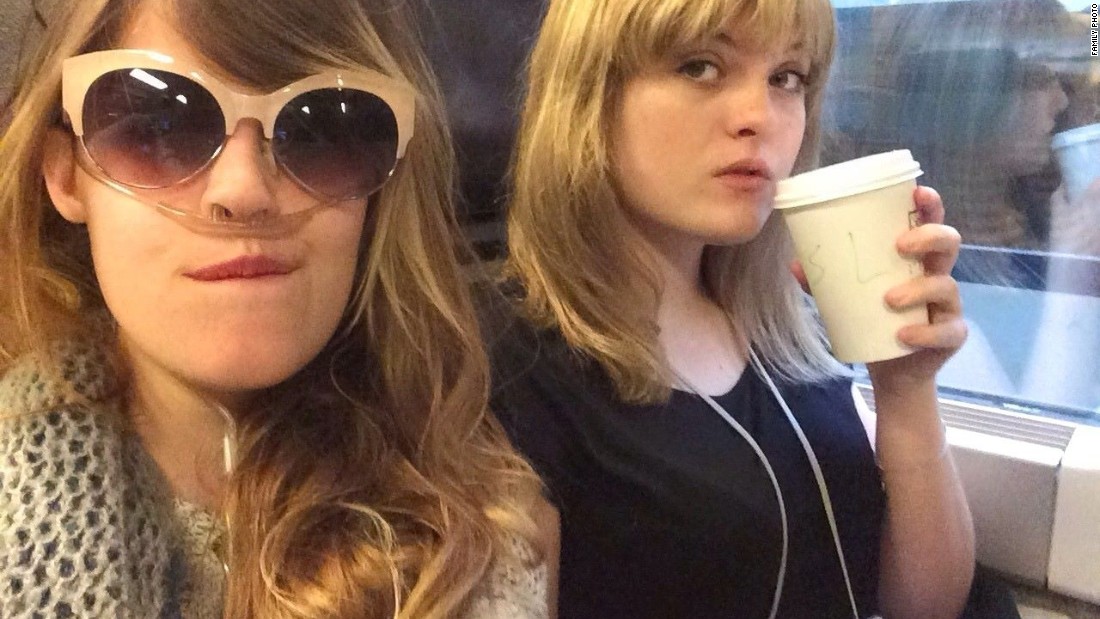 A 2015 trip to Europe with childhood friend Alicia Schomer, who says Claire has changed her: "I'm not as terrifed of the thought of death anymore, but I am terrified of not living life to the fullest."
A 2015 trip to Europe with childhood friend Alicia Schomer, who says Claire has changed her: "I'm not as terrifed of the thought of death anymore, but I am terrified of not living life to the fullest."It can be hard for any parent when a child leaves the nest, but for Claire's mom, the transition has been even more fraught.
Yeager knows how much work goes into Claire's care and worries that her daughter won't ask for help.
"I'm happy for her, and I know she's capable," her mother said. "But I just see how sick she's getting."
A year ago, Claire was at 50% lung capacity, Yeager says. Today, she's at 30%. She must take antibiotics to beat back recurring infections, which have become resistant to most of the drugs.
And when she turned 18 and could decide for herself, Claire announced that she wasn't interested in being on the list for a double lung transplant.
"I had to be honest," she said. "It's not for me and never has been."
Though transplants can extend a life, they're no cure. She'd have to live on steroids, which she hates taking. She'd run the risk of developing new issues when she's used to the ones she has. Plus, her body could reject the new lungs.
"And you can't eat sushi afterwards. That's a no," quipped Claire, who says she'd spend hundreds of dollars a month on sushi alone, if she could.
She insists that she's not giving up, though. Instead of opting for a transplant, she's holding out hope for a cure. If she got new lungs, she says, she wouldn't qualify for drugs in development. Therapies developed in trials are now helping many CFers, according to the Cystic Fibrosis Foundation, and eventually, with other clinical trials now underway, as many as 95% of CFers could benefit.
Her decision was a blow to her parents. They've had to accept that she won't pursue an option that could give her another 10 years.
"Just think of it as insurance, even if you don't want to do it," her mom pleaded at first. "Get on the list so you can change your mind."
But Yeager, no matter how uncomfortable it makes her, knows to trust her daughter's intuition.
"She has a relationship with her body that is sacred," explains her dad, who, like Claire, is a practicing Buddhist. Claire's thinking, he said: "This is the body I came in with. This is the body I'm going out with."
And as her father, "I have to live with it."
Claire, unplugged
Claire is Wineland's only child. He says she's helped him become a better person.
He's learned "to not be afraid of what hasn't happened yet" and believes that Claire is exactly how she's supposed to be. He's learned to "love what is."
At 51, he finds comfort in meditation and yoga, which Claire practiced for years, before her coma.
Wineland is a life and relationship coach. Together, he and Claire have explored ways to grow spiritually. When Claire was 10, he says, she walked on fire at a retreat run by motivational speaker Tony Robbins. He's had to figure out healthy ways to deal with pain, even to see the beauty in it.
"When you don't know what's going to happen to your only child," he says, "it can be pretty debilitating."
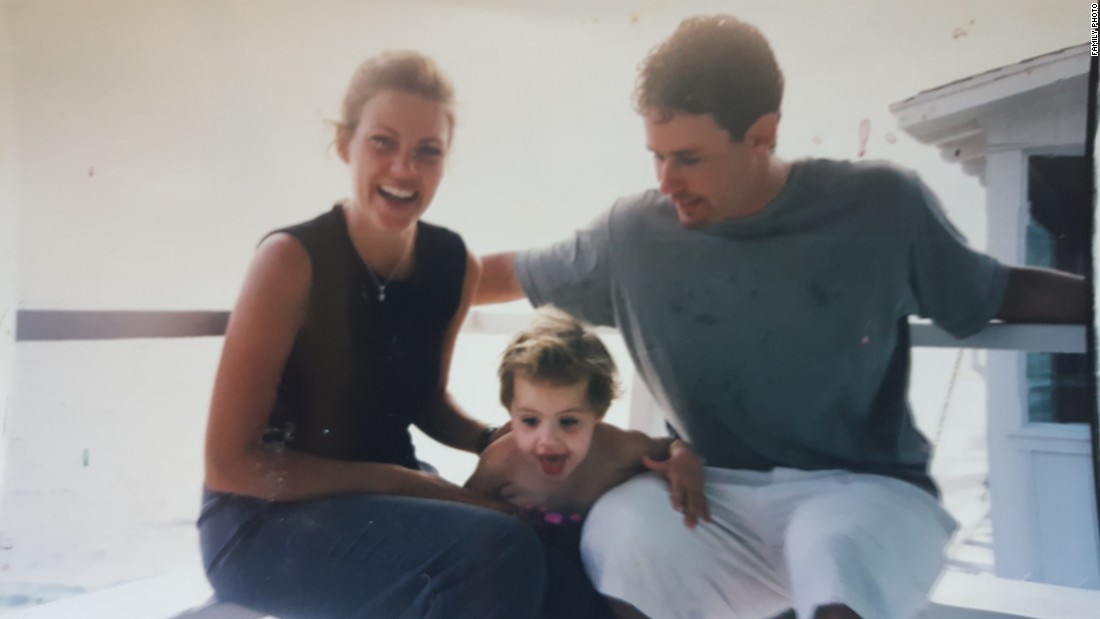 Claire's parents, Melissa Nordquist Yeager and John Wineland, split when Claire was 3 but remain close friends and partners when it comes to her care.
Claire's parents, Melissa Nordquist Yeager and John Wineland, split when Claire was 3 but remain close friends and partners when it comes to her care.Humor has also helped him cope. When there's a long line at a restaurant, he says, he'll sometimes send her to the front of the line coughing to play "the sick-kid card."
Yeager too marvels at what Claire's done for her. She says her daughter's aura and energy lift those around her, making Claire "a force of nature."
During a recent hospital stay, mother and daughter were talking about death, a subject they don't shy away from.
"After you die, you're closer to everyone you love, because you're part of everything," Yeager remembers Claire saying. The words were a gift, a reminder that her daughter's essence will remain always, even after she's gone.
"If and when it does happen," Yeager said, "I'm never going to forget her saying that."
Elanore, Claire's only sibling, is more no-nonsense. She never treated Claire differently, a fact Claire has always treasured.
"She couldn't care less that I was sick, which I loved," Claire says. "It was refreshing."
When she was younger, Elanore cared so little that sometimes she'd even unplug Claire's oxygen without telling anyone.
"We wrestled a lot," Claire remembers with a laugh. "She'd unplug it to make me tired so she could win."
She gets how sick Claire is today. Still, she doesn't see Claire as a sick person.
"She's just a person," Elanore says. "She's not all-knowing. She's still figuring it out, like a lot of people. ... She needs the freedom to be a 20-year-old."
'It's OK to feel pain'
Though Claire had been attending Santa Monica College, part of her freedom meant putting school on hold.
"Truth be told, I probably wouldn't make it to graduation," she said. "I feel my body changing, and I had to make an executive decision."
Instead, she's focusing on what she can accomplish now -- including a new partnership with Zappos for Good to make hospitals more, well, hospitable. She's designing the renovation and decoration of a playroom and intensive care rooms at the Children's Hospital of Nevada at UMC in Las Vegas, which Zappos will pay for. The partnership began after Claire addressed about 2,000 people at the company in November.
Calling her "super inspiring," Zappos CEO Tony Hsieh said, "I'm pretty sure she brought tears to most of the people in the room."
What her Zappos audience didn't know that day was how awful Claire felt.
Over the past couple years, she's had more bad days than good. And in Claire's world, that can't stop her. If she bowed out whenever she felt under the weather, she says, she'd never accomplish a thing.
It's like that again today as she sits in the green room in Encinitas, the TEDx audience awaiting her talk.
The venue is a large meeting space behind a vegan restaurant. Attendees sip kombucha on tap and exchange hugs that last extra beats. When someone asks whether there's a yoga instructor in the room, they raise their hands en masse. Outside in the hallway are pieces of self-help literature, an announcement for a festival "dedicated to the Divine Goddess" and business cards for a spiritual medium.
When I peek in on Claire, I grow worried. The room is dark, and her eyes are closed, her arms folded across her belly. I fight every protective instinct to whisk her off and take her home.
Instead, she rallies.
As the emcee introduces her, Claire stands tall, showing no sign of pain or discomfort. She strides toward the stage amid applause, her smile wide. If not for the pumping oxygen concentrator slung over her shoulder, strangers might not suspect that anything's wrong.
She jumps in and talks about the fear she had when she first spoke publicly, the guilt she felt whenever she landed in the hospital, the isolation CFers often feel. She also speaks of what inspires her and her understanding that illness shouldn't stop anyone from living proudly.
"It's OK to feel pain and experience it," she says. "I'm not trying to fix myself. My suffering has given me so much."
For about 18 minutes, she sets out to change how people think.
When she's done, the crowd stands and applauds. Some audience members hoot and holler. As she weaves through the crowd toward the exit, I chase after her, overhearing whispers like, "What a gem."
It's clear people would like to talk to her, hug her, corner her for conversation. She shoots me a glance, though, that says, "Let's get out of here."
Claire has given all she can, and she knows she'll pay a price.
The price
In the weeks that follow, Claire can't shake that infection. Then, in mid-June, an ambulance rushes her to the ER: Her fever is back at 103, her heart rate is at 185, and her white blood cell count is 30,000. Claire's oxygen saturation levels are falling, a sign of lung failure.
Not since the scare that landed her in a coma six years earlier has the situation felt so dire, her mother says.
For a few days, Claire only gets worse. She's transported to Long Beach Memorial Medical Center, where the staff feels like family. She has sepsis and a severe case of pneumonia and spends a week in intensive care. Doctors come close to putting her on a ventilator when one of the only two antibiotics that still work for her kick in.
"I thought this was it," Yeager says. "It was an eye-opener for all of us."
It's too early to know how much of a toll this setback will take on Claire, who is expected to head home from the hospital Wednesday.
"We think of Claire as invincible," her mother says, "and this was a reminder."
A reminder of how important it is to live each moment fully. A reminder of the lessons Claire still hopes to teach before it's too late.
